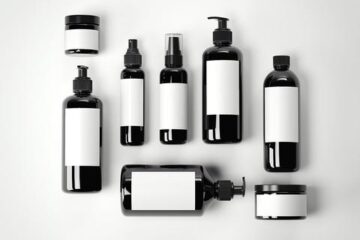Sun protection is a skincare essential and it should be a no-brainer choosing a sunscreen that works for you. However, there is a dizzying selection of products on the market, often bombarded by confusing terms and labels. Before you spend hours comparing brands and formulations, here’s what you need to know:
Why is sun protection essential?
The sun emits ultraviolet (UV) radiation which includes UVA and UVB rays which are harmful to our skin cells in different ways.
UVA rays are associated with skin aging, causing visible skin damage including sunspots and wrinkles. It accounts for 95% of the UV rays that reach the Earth’s surface and can penetrate windows and clouds, meaning we are constantly exposed to high levels of UVA during the day. Compared to UVB, UVA rays penetrate deeper into your skin, damaging skin cells beneath the surface.
UVB rays are associated with skin burning, causing lasting skin damage including sunburn and skin cancer. While UVB rays are partially absorbed by the ozone and cannot penetrate windows, UVB rays damage the outermost layers of skin and directly damage the DNA of epidermis cells and is responsible for most skin cancers.
How do we protect ourselves against UVA & UVB?
For a start, select a sunscreen that has a sun protection factor (SPF) of 30 and above. SPF is a measure how well a product protects against UVB rays. The SPF directly reflects the comparison of time between how long it takes for skin to sunburn with the product applied than without. Effectively, an ‘SPF30’ label tells you that it would take 30 times longer to sunburn while wearing the sunscreen than it would if you weren’t. SPF30 is often quoted as the minimum SPF required as it offers protection from 97% of UVB rays, noting that no sunscreen can filter out 100% of UVB rays.
To ensure that you are are also protected from UVA rays, it’s important to look for the term ‘broad spectrum’ on a sunscreen label as it indicates that the product provides proportional protection from both UVA and UVB rays. If the product is a broad spectrum sunscreen, the higher the SPF, the higher the UVA protection as well.
How do we choose between chemical and physical sunscreen?
Physical sunscreens rely on mineral blockers that create a barrier on the skin to filter out and reflect UV rays while chemical sunscreens rely on chemical blockers that penetrate the skin to absorb and disperse UV rays. This is why physical sunscreens are able to provide immediate protection upon application whereas chemical sunscreens require 20 minutes after application to take effect.
While physical sunscreens are naturally hypoallergenic and ideal for all skin types, they are traditionally associated with creating a white cast on the skin caused by the active mineral ingredients, although newer formulas utilize nanoparticles to create sheerer products. On the other hand, chemical ingredients yield a thinner consistency and near colorless formulation, and are preferred for use in cosmetics. However, they contain a combination of chemical filters which may cause skin sensitivities.
Additionally, physical and chemical sunscreens are often compared for their environmental impact – physical sunscreens contain natural mineral ingredients, typically zinc oxide and titanium dioxide that are biodegradable and safe for our environment and marine life; chemical sunscreens contain chemical filters such as Oxybenzone that are toxic to marine animals and coral reefs.
The verdict
Ultimately, sunscreen is a daily essential so whether you use a physical or chemical formula is up to personal preference. Simply keep in mind that your sunscreen should offer broad spectrum protection with SPF30 or higher to keep you well protected in the sun!







